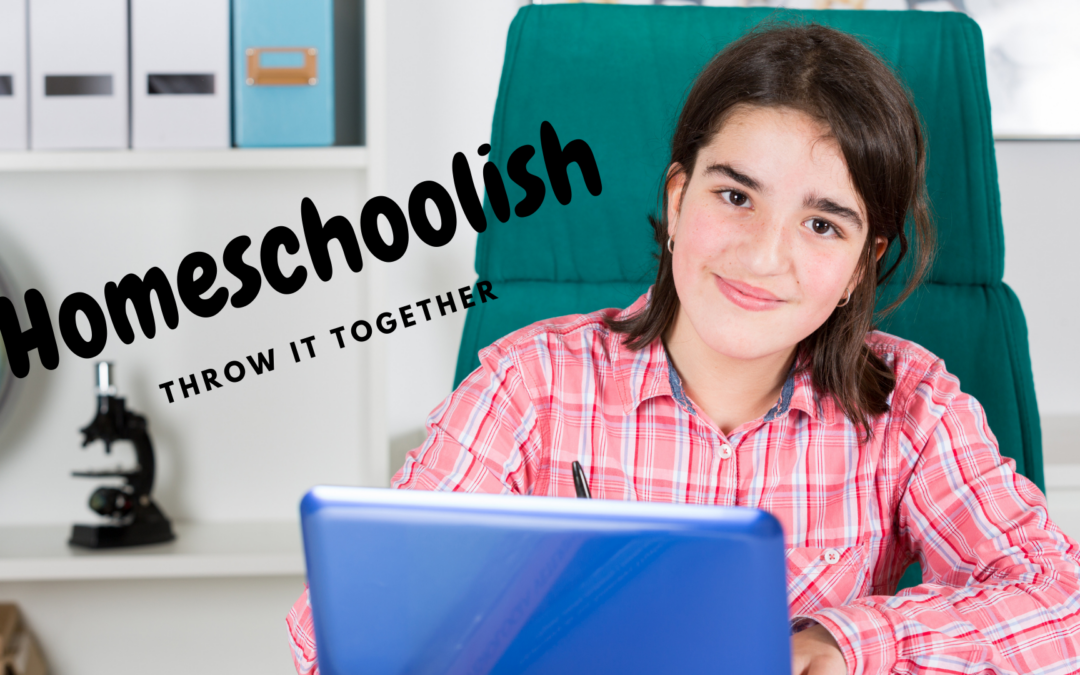Homeschoolish: Relaxed Homeschooling
Just as a chef carefully chooses the ingredients for a meal, homeschool parents can be the chefs of their homeschool and carefully choose the best homeschool resources and materials for their unique children. They can create a well-rounded and personalized learning experience.
A few years ago, Chef Christopher Kimball published a cookbook called Cookish: Throw it Together. Cookish promotes the idea that following an exact recipe is not as important as adhering to basic principles when preparing food. The book features around 200 simple recipes that can be “thrown together,” each made with six ingredients or less. The recipes are meant to be intuitive, making use of whatever is on hand to enable you to walk into the kitchen and slap something together without much forethought. It doesn’t need to be fancy to be delicious.
This applies to our homeschools as well. It’s understandable that you want to do it all. You want to do all the big curricula boxed sets with the wall charts, manipulatives, and dissection kits. You want to do all the crafting projects, go on all the field trips, and make full use of the online streaming access you purchased. Test kits, answer keys, activity books, planners, reading lists, study cards and the long, deep rabbit hole of homeschooling resources that are available out there these days.
It’s exciting, I get it! And if you can work with all that stuff, then more power to you! But the most important thing about homeschooling is that whatever you’re doing works. Functional is more important than fancy. And not everyone has the time or finances for all the fancy bells and whistles anyway. But that’s alright! Focus on what you have at hand. The books you already have on your shelf. Interesting places you can visit that are close by. Your local library. Just like Christopher Kimball encourages people to “throw it together” in the kitchen, you can “throw it together” in your homeschool as well. You can be “homeschoolish.”
Focus your strengths! You might not have the money to buy the latest box set curricula, but maybe you’re really good at finding quality resources in the library. Or maybe you’re not very academically oriented yourself but you’re great at crafting and creative projects. That’s fantastic! Instead of working through a history book with your children, do some historical-themed art projects. Work to your strengths.
Relax. In case you ever feel bad comparing what you’re doing to what they do in site-based schools—well, first off, check out this article on how you don’t need to mimic any school. But second, remember that even in the best schools they don’t cover every single subject; they don’t always “finish the book.” The most well-thought-out educational plan is never more than an outline, and there isn’t a teacher in existence who has never deviated from his syllabus. It’s okay. So don’t overthink, simplify.
The important thing in all this is quality over quantity; it’s not about more bells and whistles, more resources, more assignments; it’s about creating quality educational experiences for your children that will encourage them to be life-long learners. To enkindle the joy in discovery!







